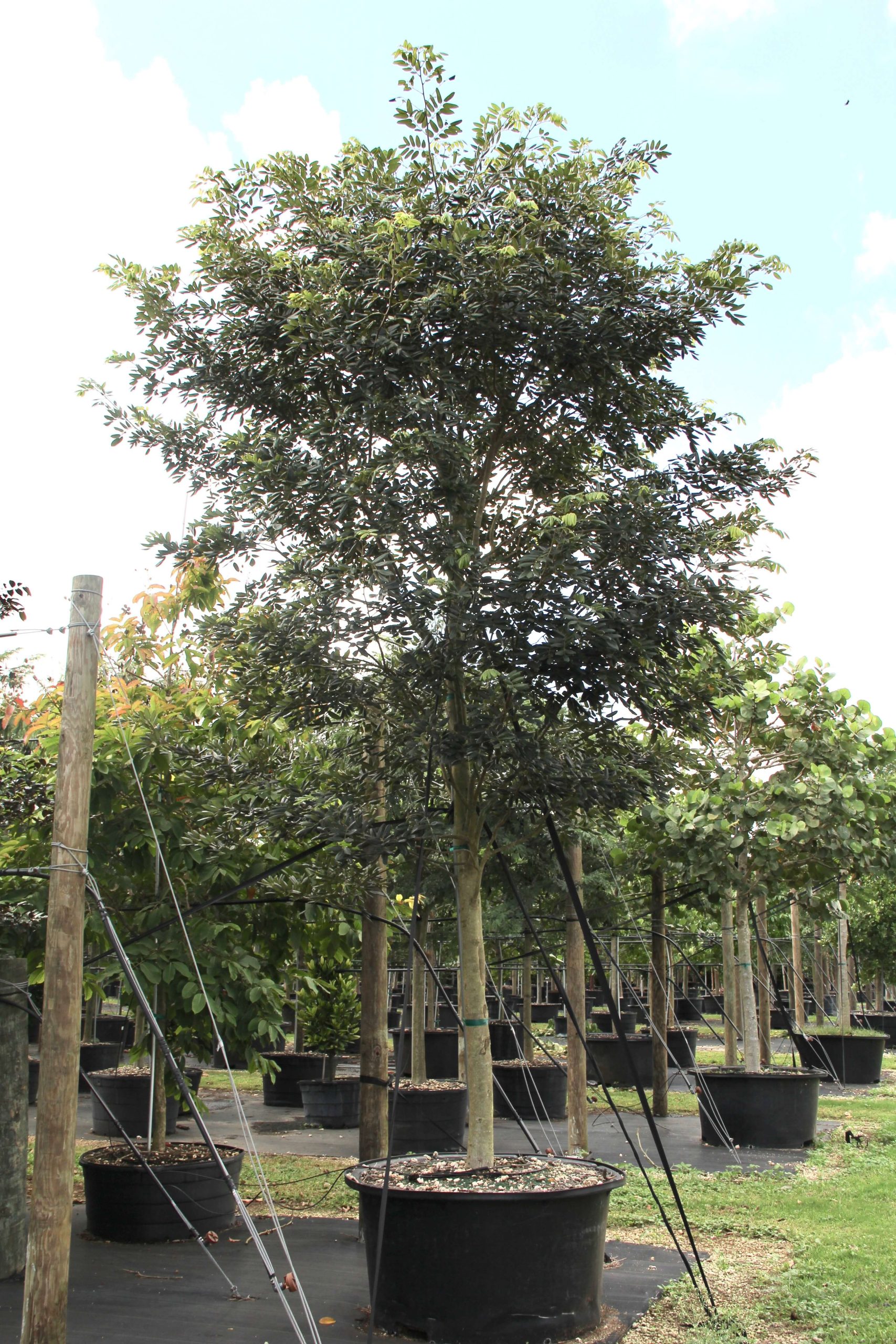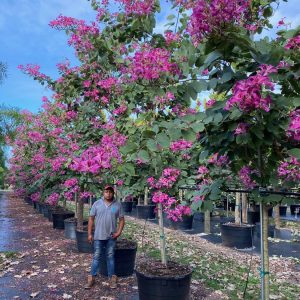Description
Jamaican Dogwood Tree Description
Piscidia Piscipula (Jamaican Dogwood) tree is of medium-size tree, that reaches about 45 feet in height and has a thin gray bark with irregular dark patches. Nevertheless, the tree has no relation to the true Dogwoods (Dornus spp.).
For instance, Jamaican dogwood tree has an irregular open crown with stout erect or irregular branches. Additionally, leaves are green, deciduous, alternate, bipinnate, 4-9 inches long, with 5-9/11 leaflets. Leaflets are oblong to obovate in shape, 1 1/2-3 inches long, darker green above, beneath paler and with short hairs. Flowers are white with red or pink, and borne in erect pea-like clusters, typically when the tree drops its leaves. And, fruits are light brown pods, 3-4 inches long, with 4 papery wings, containing oval red-brown seeds, used for propagation along with cuttings.
Wood is yellow-brown in color, resistant to decay, suitable for boat building, posts, poles and fuelwood. The bark, roots, twigs and leaves are poisonous, an extract is made to stun fish. One of the chemicals present is rotenone, which has traditional and modern medicinal use.
Piscidia Piscipula Tree Cultivation and Landscape Usage
In cultivation, Piscidia Piscipula is hardy, preferring well-drained soils with some organic content. Landscape uses of Jamaican dogwood include a colorful light shade tree in gardens and parks, an accent tree in coastal locations and along fence rows; it can also be a hedge. Care should be exercised in planting and care of this tree because of its poisonous qualities.
🌳Other popular and beautiful plants: Jamaican caper tree.









